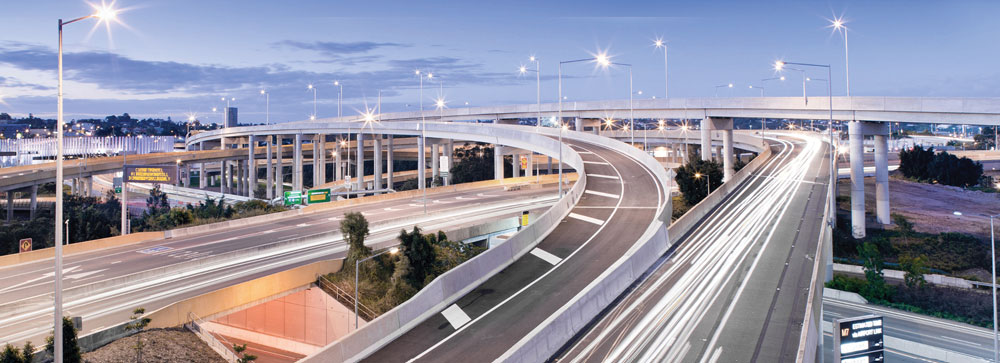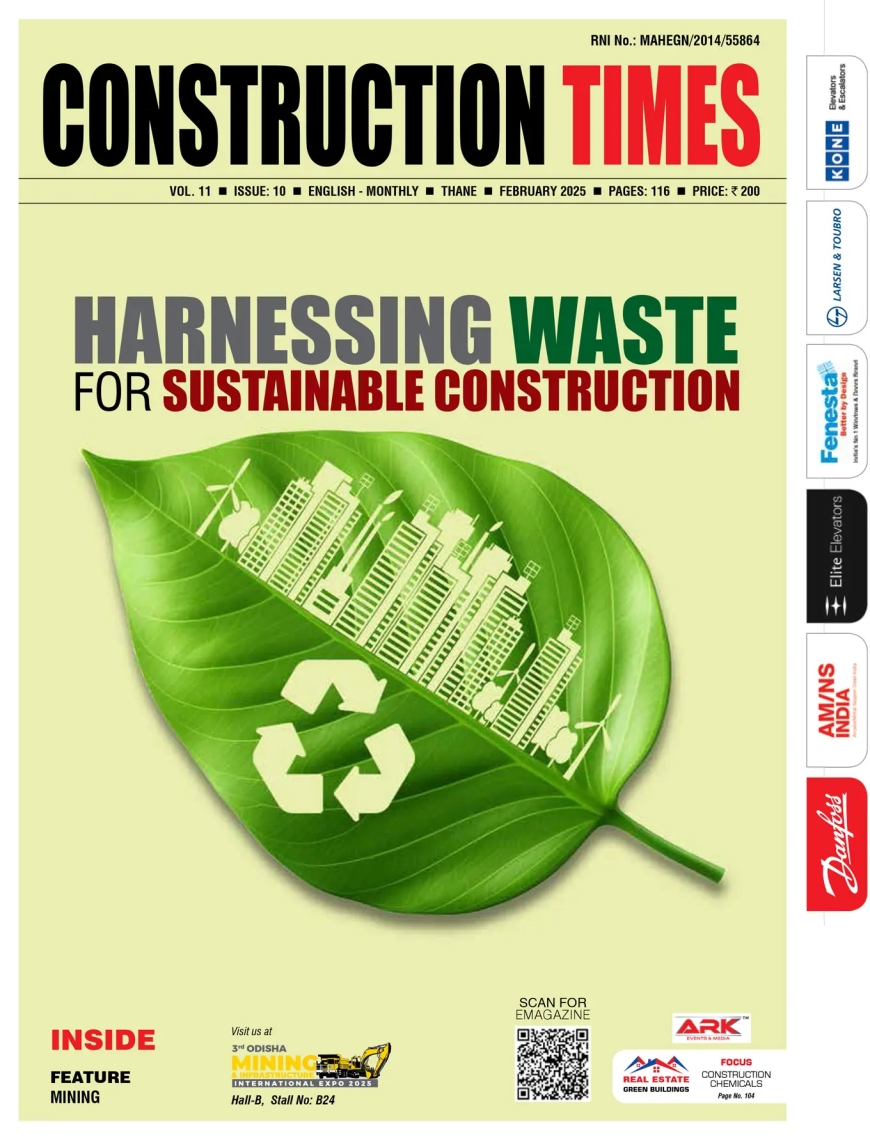ROADS & HIGHWAYS - A Core Sector Undergoing Transformation.
There is a fresh impetus to revive investments in the roads and highways sector. Puneet Narang takes a look into the developments in the Roads & Highways Sector. Of the 111 lac crore National Infrastructure Plan announced by the Ministry of Finance in the pre-Covid time (December 2019), Roads and Highways

There is a fresh impetus to revive investments in the roads and highways sector.
Puneet Narang takes a look into the developments in the Roads & Highways Sector.Of the 111 lac crore National Infrastructure Plan announced by the Ministry of Finance in the pre-Covid time (December 2019), Roads and Highways as a sector has the second largest allocation of 18% only behind the energy sector. The last six to eight months from March to October 2020 saw competing priorities at play during the disruption caused by the pandemic. The role and significance of roads and especially that of national highways in moving goods and people efficiently, is increasingly evident as an important enabler to the economic revival. The rate of award of new projects and that of actual construction has improved over the years, but a lot more still needs to be done.
MoRTH and its nodal implementing agency NHAI has been proactive in responding to the challenges. A host of policy initiatives have been taken in the past to address expeditious land acquisition, revival on languishing projects and time bound resolution of disputes in an affordable manner. There are very few organizations in the country today that are executing such a national level program with a very lean in house team. In order to achieve high volumes and scale in execution, there is a fair degree of reliance on the developers (concessionaires and contractors) and consultant (DPR/AE/IE) ecosystem. The geographically spread out nature of works increases exposure to a high degree of external variables, hence in order to reduce its time and cost overruns, it necessitates a strong program and project level monitoring with tight controls to be put in place. There are initiatives underway to improve the quality and performance of the independent engineer /authority engineer and the culture of strong project management to be adopted across the project implementation units, by bringing in a systems and processes driven culture.
Enabled by a clear vision and focus on execution, driven from the highest offices of the country in the sector - the regional and project level offices are undergoing a transformation, with a clear outcome oriented approach and closely tracking performance, slowly instilling accountability at all levels. In the first six months of FY21, NHAI awarded a total of 40 projects covering 1,330 km length at the capital cost of Rs 47,289 crore, which includes cost of civil work, land acquisition, and other pre-construction activities. Record levels of disbursements to contractors and consultants, ensuring that the cash-flows of delivery ecosystem does not get dented during the pandemic led slowdown, overall puts NHAI on track to achieve, or exceed its 4500 km target award for FY21. Overall construction is also nearly 90% of last year levels and it is expected to be at par by December.
While work from home became a norm, several government offices including NHAI continued to operate with almost full strength in offices with stringent safety / protocols in place and used the Covid period to digitize its operations and work-flows. Speed of technology adoption during this period has been a clear positive and with its penetration (and acceptability increasing) across the full organization, and partner ecosystem, there should be marked improvement in outcomes. Technology brings transparency, and a single source of data that enables faster executive decision making. By cutting down lag in information flow from the remote sites to board rooms, multiple projects stand to gain leading to an increased pace of execution. There is acceptance and a desire to make the large organization and its procedures 'simpler' such that the project directors and regional officers can embrace a sharper, more efficient and less cumbersome way of operating, making it easier to do business. Such a transition takes time, but with strong leadership, management support and actions simplified by use of technology the wasteful steps will slowly give way to increased system throughput.
On the execution side, there is increasing awareness around design and engineering, material sciences and alternative materials adoption to widen the acceptable / empaneled sources for key construction items - e.g. petroleum products, bridge bearings, expansion joints and encourage materials such as geotextiles and others.
For highways that are getting completed and operational, there is a clear intent to improve the quality of road furniture that includes signages, landscaping, digitally configured integrated traffic flow messaging, quality of ridership with enhanced levels of services around safety and security. Our current levels of community traffic sense, both the design and enforcement of rules / regulation is linked to a datedset of parameters. With increased end user awareness, resulting from increasing overseas travel and two way workforce migration, there needs to be an overhaul and rethink on the implementation, both on the part of the policy makers and end users.
One of the key challenges facing the sector is around reviving PPP. The so-called V-BOT or variable BOT which offset the risks by keeping a cap on lower realizable traffic has not been awarded yet. High debt levels of erstwhile large EPC contractors have kept them away from pure play PPP (BOT/DBFOT-Toll) and almost over two and a half years there has been hardly any BOT / DBFOT - Toll awarded. After its introduction in 2016, over the last few years the Hybrid Annuity Mode (HAM) has also seen a dip in the new awards. With a limited number of large players (six to seven) with strong financials, the smaller developers have struggled to achieve financial closure leading to delays in appointed date. While there has been an increase in the EPC awards the scale of programs like Bharatmala Pariyojna warrants steps for reviving private sector involvement.
As a response to the industry and private sector asks and looking at the slowing pace of HAM the government has announced an easing of HAM norms a few days back. As part of the new rules, the 40% construction cost support by the government will now be in more frequent installments (10 tranches versus earlier 5) helping the concessionaire in its cash flows and also interest on reducing balance of completion cost will be linked to MCLR plus 1.25% instead of the earlier RBI rate plus 3%, among other points.
With overall state revenues under stress due to the lockdown, there is a fresh impetus to revive investments in the roads and highways sector. While the operational asset monetization initiative had seen a good 1st Toll-Operate-Transfer (TOT) bundle response when Macquarie group's infrastructure funding arm paid Rs. 9,682 crore to manage and collect toll from nine stretches of around 700km for a period of 30 years. On similar lines the 3rd TOT bundle was picked up by Singapore based Cube Highways for Rs. 5,011 crore. The 2nd and 4th bundles were annulled, as bids received were lower than estimated price. NHAI has now invited bids for the fifth bundle of TOT which is also the smallest with two stretches on offer for a period of 20 years.
While overall costs of construction, land acquisition and utility shifting are increasing, funding is getting even more constrained. The TOT model aims to address the risks associated with tolling revenue fluctuations due to high variability in traffic flow, related O&M costs like toll plaza expenses and any major periodic maintenance. The concessionaire pays a one-time upfront concession fee as a lump sum for rights to operate and collect toll for a pre-determined period of 20 to 30 years, as applicable. Model is applicable to EPC and BOT projects which have had stable operations of at least two years post project completion.
The government is also moving fast on putting in place its first sector specific Infrastructure Investment Trust i.e. NHAI InVIT for asset monetization.
The new build for the highway construction is likely to continue for the next 4 to 5 years at least, to bridge the infrastructure gap in the country, with large schemes like Bharatmala Pariyojna that entail large projects like Delhi-Mumbai access-controlled highway. Post this period, the development and construction activities could reduce and in parallel increasing focus and steps towards quality operations and end user experience would become critical. Enhanced use of technology applications, adoption of safety solutions, linked non-toll revenues for sustainable holistic experience that includes quality way-side facilities, regular maintenance and upkeep of infrastructure, resilient and sustainable assets for augmenting finances would become par for the course. There will be a clear need for training and capacity building to address these demands for quality operations and asset management phase.
Some of the clear growth drivers for the sector are focus on smooth traffic movement and enhancement of logistics efficiency through multi-modal integration, high levels of technology adoption and moving to a digitalized nation-wide asset base. Road safety and user experience, with citizen centricity as a focus, while institutional integration of transport departments, adoption of e-mobility as a service and integrated payment mechanisms to ensure seamless operations are also underway, presenting opportunities for the roads and highways sector to evolve and come to par with global standards.
In summary, the roads and highways sector, that forms the backbone and keeps the economy moving, is undergoing a transformation for the better. Proactive, robust governance and improved monitoring, with tech adoption and end user focus should improve the ride for the upcoming decade and beyond.
Disclaimer: Views expressed are strictly personal and not on behalf of KPMG in India, all data points are credited to publicly available news articles.
With inputs from Abhishek M, Phani M and Abhisek D.
Hits: 106
















